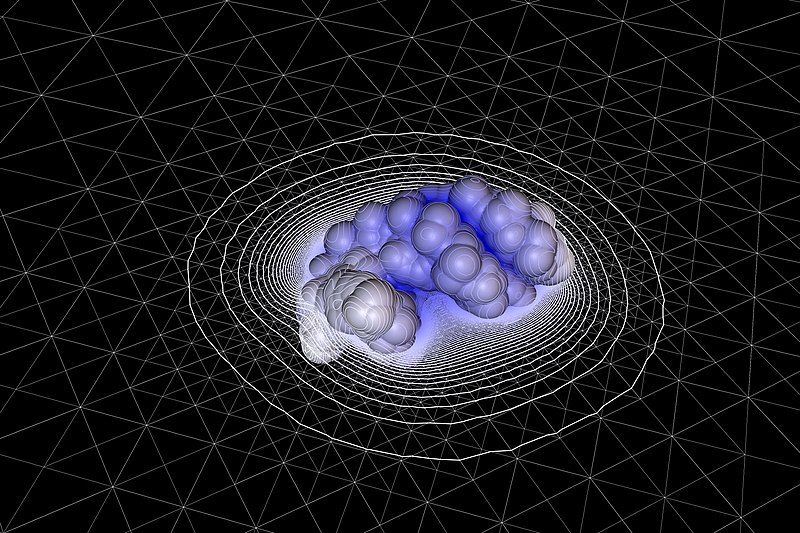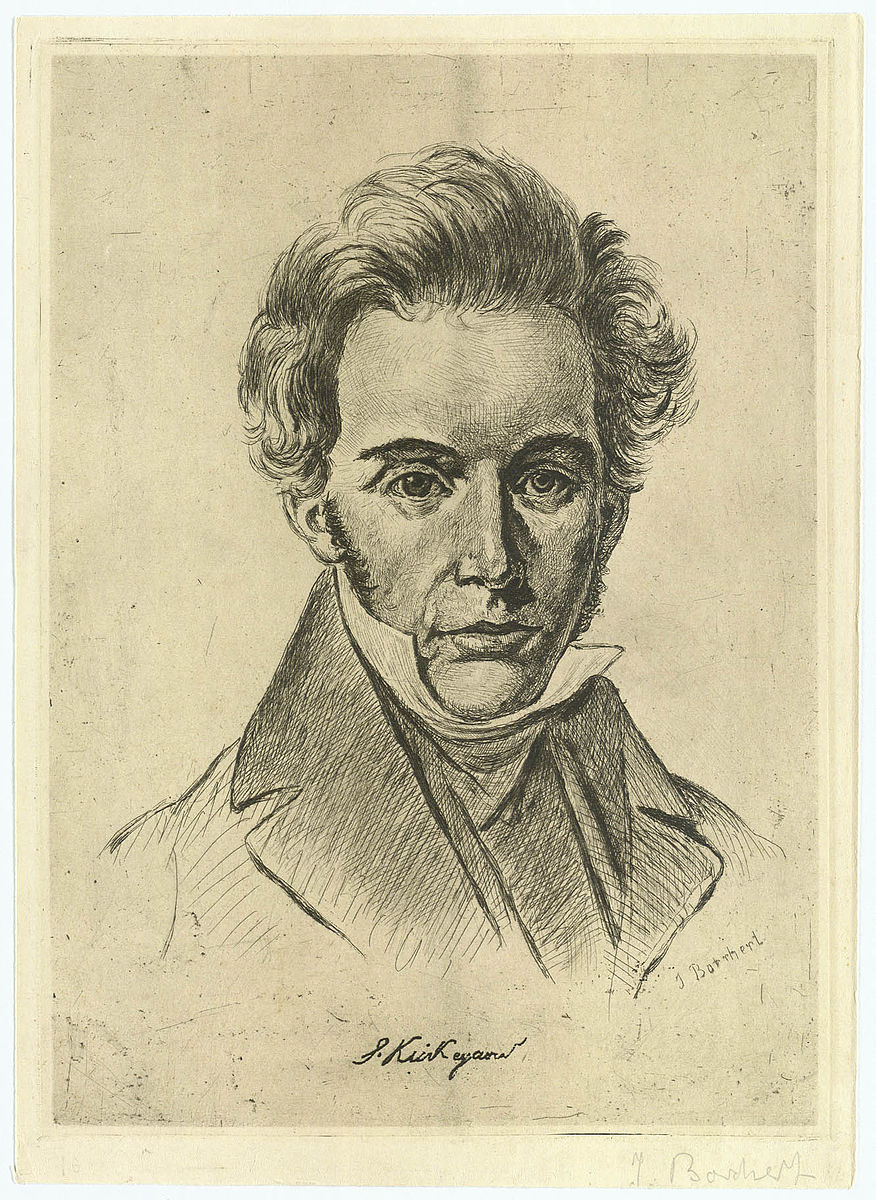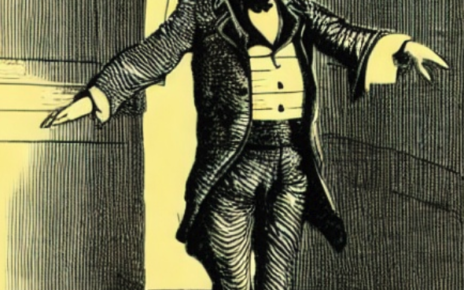The following article is published in two parts.
God is the Future Itself: From Ruyer to Mormonism
God, if we hold to this word, is the future itself, or rather the eternal reservoir beyond time and creating time, who constantly projects himself or pours himself into the present (…).[1]
In this essay on the futurity of God and futuristic thinking in theology we wish to begin with the idiosyncratic philosophical and theological thought of Raymond Ruyer (1902–1987). Throughout his career as a philosopher, Ruyer published on topics such as the philosophy of biology and nature, contributed to cybernetics, technology, and information at the very beginning of the era of robotics and computers in the 1940s; and, as an equally important part of his work, he contributed to the philosophy of religion with his equally original conception of the Tao-God or the Unknown God.[2] In his essay “The Status of the Future and the Invisible World,” Ruyer presents us with an idiosyncratic account of God, time, matter, and consciousness of the world, reaching towards the entirely new forms of pan(en)theism and futuristic thought in theology. In his thought, Ruyer feels obliged to polemicize with two extremes, here as related to the future – fatalism (astrology, premonition, etc.) and scientific determinism (with its laws being able to define and calculate the results of any movement).
Referring to Einstein’s theory of relativity, Ruyer does not want to assert that there is a pre-existing or deterministically fixed future available somewhere out there – i.e., being within reach for someone traveling through space on a super-rapid spaceship. The symmetry is broken during time travel within the laws of gravity for two persons traveling at the same time at different speeds, but the future as such does not yet exist for us and thus remains unknown to any person whatsoever. What kind of temporality of the future can we imagine, then? According to our philosopher, “if existing things did not continue to exist except by freely causing the future and by disrupting their normal functioning, time would be disjointed and the future would no longer be their future.”[3] But there is more in the concept of future and it is here that Ruyer’s thought becomes especially theologically interesting and indeed thought-provoking. Thinking theologically now, and placing his thoughts, as it were, in medias res of some of the key questions of a new theological temporality, Ruyer introduces and defines his idea of “God” in the following way:
God, if we hold to this word, is the future itself, or rather the eternal reservoir beyond time and creating time, who constantly projects himself or pours himself into the present and who transforms the functioning of already created beings into sensible behavior and actions in order to cause the world to evolve in a living manner and not like a great machine which could only finish at a stable equilibrium or with irremedial wear and degradation. (…) God, or the future-as-ideal-control, can only produce minute shifts in direction. His “ideas” steer and guide through ultra-weak interactions. Nevertheless, the universe finally obeys this imperceptible future, but not without enormous failures and catastrophes.[4]
This is an extraordinary piece of theological thinking and we will return to the analysis of this paragraph in the third part of this paper – as its contents are directly linked to the reflections on time and time travel in Christopher Nolan’s Interstellar. Ruyer’s God is closely linked to the very concept of time and temporality of the future itself: it is situated beyond time and actually creates time on its own behalf – as proposed by Ruyer. The “unknown God” of Ruyer “envelopes the ‘material’ world which, minus this envelope, would be only ‘thing’ in its purest state, indistinguishable from nothing, or which would be only a present incapable of presence lacking a past and a future.”[5]
But to understand this dense and rich passage, we need to understand the notion of mnemic theme in Ruyer. What is defining our search for answers in this world appears as twofold – as an inherent creativity of the world and its openness, or “call of the future” – the call that enables us to enhance and re-create ourselves.[6] Ontologically, this happens within the world of forms of life and among them anti-Platonic “primary forms” are of key importance. Primary forms have self-forming properties and range “from the most elementary forms of matter, the atom and its subatomic ingredients, to the most complex forms of self-production that characterize all forms of life.”[7] Ruyer is searching for a link or connection (later, with Giordano Bruno we will understand this ontological or “cosmic” link as a bond/vinculum) that underlines all simple and more complex processes in the world.
In this view, he seeks both organic as well as inorganic conditions, and explores into every consciousness, “including those before and beyond the human”[8] – which includes machines, computers (AI), or technology in general. Primary forms are not separated from the material which actually forms them and this view enables Ruyer to direct his reflections very much in line with the developments in quantum physics during his time. They are dynamic structures, repairing themselves, and they are thus forming trans-spatial mnemic themes and their inherently embodied values:
Primary forms can be attributed both a “life” and a “consciousness,” even though they cannot be understood on the models of life and consciousness that we attribute to ourselves. (…) If living things are never stable forms, always undergoing change, nevertheless there is something that subsists in these changes: not anything bodily – for every cell and organ is in the process of self-regeneration or self-replacement – but what Ruyer understands as a melodic or mnemic theme, not locatable in space or time but that subsists and accompanies life, and all primary forms, through its processes of autoaffection.[9]
We thus see that within Ruyer’s embryogenesis of the world, the consciousness understood as a mnemic theme must already pre-exist in the world. There is a continuity that links things distant or different from themselves as far as subatomic matter and human “values”. This means that mnemic themes (or memory) gain precedence over being(s) and also that “consciousness” (in one of its forms) takes over from evolutionary biology. Finally, according to Grosz, “even God must be understood not as a divine being separate from the world, but as an acting, a mode of self-creation according to an internal ideal.”[10] But let us return to the question of temporality in these processes: in Ruyer’s thought of the divine, the future itself may be the destination.
Now, about this process of imagining the future, or projecting back from the pre-conceived future into our deeds or activities – as inherent or immanent in the world – Ruyer writes: “When we imagine, our imagination depends especially on our memory. But there is also a tiny proportion of creativity, of something pulled from nothing”[11] – and this difference of creativity could be labelled as a quantum moment in theology. The growth, arising from our creativity and all of its visible consequences, however, is not all that we have: there exists, by way of comparison, the invisible world, or the unknown God, which is like an immense body of underground water [being] under a certain pressure. This underground water (as a reservoir of memories or mnemic themes) is available to us only as long as we are able to “communicate” on our own account with those layers of these supplies of water which are positioned more closely to the surface.
Again: we must make our own future, but – with an important distinction now – nothing can be made without conforming to “an order existing well beyond our own wills”, in other words, “God proposes and man disposes. And this gives men, those on the surface, the impression of having to work things out alone in the visible world. Nevertheless, their entire ‘substance’ is made up of the underground water.”[12] Finally, according to Ruyer, this unknown God isthe universal framework of the cosmos, planter of the very tree of life, the principle of all channeled memories as well as all possible types of existences that we can imagine. God is beyond all place and beyond all time and envelopes the entire material and spiritual world. This now enables us to point at another aspect of divinity – and it is precisely the sentence “As man is, God once was, as God is, man may become”[13] of the Mormonism that we wish to bring to our discussion now.
With its idiosyncratic but original theological account, Mormonism represents one of the most vital and relevant attempts at redefining the divinity in the early post-monotheist and secular era of the 19th century. According to Simon Critchley, Mormonism’s main message consists of an idea that we have to learn how to become gods, and that we indeed have inherited the very same power and glory as God to become exalted like him. We therefore can arrive at the “station” of God, but this can only happen in the future. Incarnation therefore is a two-way street, and a part in each of us that we usually call spirit is in fact co-equal with God.
With its feature of a continuing revelation, Mormon theology remains open to the future and reveals a truly post-Christian character and message to us.[14] Human deification or apotheosis then represents the most significant part of the teaching of Mormonism. The making of gods, and therefore, the aspiring towards the future as our final destination in achieving godhood – stated more directly, means that there is a capacity in/for us for being a part of the process in which we may indeed become gods. Apotheosis goes both beyond “theosis” as a process of human transformation through becoming united with God, as well as beyond Christological logic, as explained by Davies:
The “two-natures” argument over Jesus’s identity still remains of interest to contemporary Christians, because he is sometimes made so divine as to lose contact with humanity, whilst at other times he is represented as so human as to lose the divine status. For Latter-day Saints this is not a problem, for every individual shares the same “substance”, everyone is a spirit person at some stage of developing their potential as divine, and in this sense Jesus is simply an elder brother who is further along the path of divine development.[15]
As we did take words from Ruyer in a literal sense, and whilst now we are making ourselves gods in the process of apotheosis, to us God now indeed becomes the future itself. Now, in King’s Follett Discourse – perhaps the most inspiring and revealing text ever delivered and revealed by Joseph Smith – the Mormon prophet describes the genesis of a God as follows:
First, God himself, who sits enthroned in yonder heaven, is a man like one of you. That is the great secret. (…) [But] God himself, the Father of us all, dwelt on an earth the same as Jesus Christ himself did (…) Here, then, is eternal life – to know the only wise and true God. And you have got to learn how to be Gods yourselves – to be kings and priests to god, the same as all Gods have done – by going from a small degree to another, from grace to grace, from exaltation to exaltation, until you are able to sit in glory as do those who sit enthroned in everlasting power.[16]
God is our future destination, therefore. As in Ruyer’s biologico-theological innovation, there is a full continuity among human beings and gods (note a transition from a god to gods here as a mark of an inherent-dynamic plurality in the concept of divinity itself). As matter and its elements precede creation (and creatio ex nihilo becomes obsolete) both in Ruyer and in Mormonism, moreover, according to Joseph Smith, God himself could not even create himself: “God never did have power to create the spirit of man at all. God himself could not create himself. Intelligence exists upon a self-existent principle; it is a spirit from age to age, and there is no creation about it.”[17] In a more radicalized spatially-temporalized sense, we can now contend that our divinization is well imprinted into a continuity of present and future spheres.[18] The argument for the existence of God that we would like to present here (this argument will be upgraded at the end of this essay) – would run as follows:
God is the future itself, revealing in a series of revelations through time to other beings as not-yet-gods or evolving-gods. God evolved from the most archaic and still not-fully-disclosed matter and began acting from the primeval chaos in a time moment still not known to us human beings. God as a fully evolved (supreme/super-intelligent) being, reaching its/his/her destination, projects into the present. In this process, which is mediated to us through visible signs (called also “miracles”), God enlightens and transforms the functioning of the primary forms and the secondary-composite beings by causing human beings and beings beyond our reach to evolve into an ever more agapeistically developed species.
The esoteric and hidden connection between God and other beings is called a bond, or gravity – and God thus reveals as the bonding agent.This process may finally be labelled as the evolution of materially-spiritual vibration of a cosmic consciousness as revealed in the cosmic presence of God as a bond of love. But to be able to develop this thought on God’s temporality and futurity and God as the bonding agent more fully, an elaboration on the cosmic/natural bond or vinculum is required.
The Nolan Philosopher: God as the Bonding Agent
In a letter to K. A. Eschenmeyer from July 30, 1801, Schelling contends that in this year, a light entered his philosophy: it was a new impulse that enabled him to abandon his earlier transcendental thinking.[19] In the 1802 treatise Bruno, Schelling already embarks upon a new destination for his thought: in a form of a dialogue, and in response to Fichte’s harsh criticism of his system, Schelling – disguised in dialogue as (Giordano) Bruno (i.e., the Nolan)[20] – presents us with a fascinating account on the natural and divine principles of the world – and thus on the nature of reality, matter, God and their ontological yet hidden bond. With this gesture, the center of gravity of philosophy now shifts from Kant and Fichte to Schelling and Hegel in a most direct way. According to Schelling, the aim of this new thought could be described as follows:
To come to know this indifference within the absolute – that character whereby idea is substance, the absolutely real, whereby form is also essential reality and reality is form, each one inseparable from the other, whereby form and reality are not just perfectly similar likenesses, but directly are one another – this is to discover the absolute center of gravity. To know this is to uncover the original metal of truth, as it were, the prime ingredient in the alloys of all individual truths, without which none of them would be true.[21]
As a direct consequence to this overturning of German idealism, a new philosophical view of divine and nature principles, God and nature, respectively, a new constellation emerges – now in Schelling’s concluding words from Bruno this reads as follows: “And as we move up and down this spiritual ladder, freely and without constraint, now descending and beholding the identity of the divine and natural principle dissolved, now ascending and resolving everything again into the one, we shall see nature within God and God within nature.”[22] For Schelling, both the metal of truth, as well as the alloys of all other truths clearly indicate toward his “material” perception of a dynamic, yet ontologically esoteric nature of, as it were, an elemental-materially underpinnedconstellation of truth.
Now, on this basis, we intend to embark on a more esoteric path toward this constellation by reading Giordano Bruno’s philosophy through the lens of a magical bond and related philosophy of a mesocosmic coordination (bond/vinculum). With this gesture, we want to prepare the ground for our argument about the divinity as being marked as a spiritually-material process in time, clothing and penetrating the totality of being – of both visible as well as invisible nature.
Apart from his far-reaching innovations in cosmology and its effects on the progress of the scientific revolution, the Nolan philosopher’s main contribution to the history of philosophy might be in proposing an entirely new concept of the divinity.[23] In our attempt to delineate the expansion and liminality of the Nolan’s immanent and temporally-synchronistic cosmic God, his understanding of matter is of vital importance. Following the trail of the Platonists (world-soul), the best “materialist” traditions of Aristotelianism and Neo-Platonism (as regards their treatment of matter), Islamic influences (Averroes) as well as of Nicolas of Cusa’s argument on the impossibility of separating the infinite potency of creating and being created in God, Bruno therefore attempted a higher (“magical”) synthesis of their respective thoughts – only to be able to think God or the divinity in accordance with matter.
According to him, Averroes is praised for his elaboration of matter as comprising in itself unlimited dimensions, and if this thought is taken together with his claim that all things “no matter how small and miniscule, have in them part of that spiritual substance”[24] then we have come full circle here. Matter therefore is taken as a substrate, a principle indeed which cannot be annihilated; because a soul/spirit is present in all things; as a consequence, God must necessarily be linked to the world: thus natura est deus in rebus.
Lenart Škof is Professor of Philosophy and Head of the Institute for Philosophical Studies at the Science and Research Centre Koper (Slovenia). He is author of several books, among them Pragmatist Variations on Ethical and Intercultural Life (Lexington Books, 2012) and Breath of Proximity: Intersubjectivity, Ethics and Peace (Springer, 2015). His current research project is dedicated to Antigone, feminist ethics, and questions of philosophy, religious justice, and peace.
______________________________________________________________________________
[1] Raymond Ruyer, “The Status of the Future and the Invisible World”, transl. by R. Scott Walker, Diogenes 36 (1980), 43.
[2] See on this an excellent presentation and analysis of his work in: Elizabeth Grosz, The Incorporeal: Ontology, Ethics and the Limits of Materialism (New York: Columbia University Press, 2018), ch. 6 (“Ruyer and Embryogenesis of the World”). On Tao-God see “The Status of the Future and the Invisible World” and “Person- God and Tao-God”, trans. K. Pender, Revue de Métaphysique et de Morale 52, no. 2 (1947), 1-11.
[3] Ruyer, “The Status of the Future and the Invisible World”, 42.
[4] Ibid., 43 (our emphasis).
[5] Ibid., 53.
[6] Grosz, The Incorporeal, 211.
[7] Ibid., 212. Secondary forms are composites and aggregates – such as a house, a car, or a bridge, which are all planned and they are also not self-repairing in themselves. What they have is the ability of decomposition or recomposition. But they do not possess autoaffection or consciousness such as do primary forms.
[8] Ibid., 213. (our emphasis).
[9] Ibid., 216.
[10] Ibid., 229.
[11] Ruyer, “The Status of the Future”, 46.
[12] Ibid.
[13] These are originally the words of Lorenzo Snow, recorded in Eliza R. Snow’s Biography and Family Record of Lorenzo Snow (Salt Lake City: Deseret News Co., 1884), see pp. 46–47. These words were later confirmed as revelation and preached by the founder of Mormonism, Joseph Smith in his famous “The King Follett Discourse”, Times and Seasons (1844), 5: 612-617. See http://mldb.byu.edu/follett.htm (accessed June 8, 2020).
[14] Cf. Simon Critchley, “Why I Love Mormonism”, The New York Times, September 16 (2012). URL: https://opinionator.blogs.nytimes.com/2012/09/16/why-i-love-mormonism/ (accessed June 10, 2020).
[15] Douglas J. Davies, An Introduction to Mormonism (Cambridge: Cambridge University Press, 2003), 80.
[16] Smith, “The King Follett Discourse”.
[17] Ibid.
[18] Cf. here an excellent account on Mormon materialism byJohn Durham Peters titled “Reflections on Mormon Materialism”, Sunstone, March 1993, 47–52.
[19] F.W.J. Schelling, Briefe und Dokumente, Bd. 3 (Bonn. Bouvier u. Co., 1975), 222.
[20] The designation “The Nolan Philosopher” comes from the fact that Giordano Bruno was born in Nola (near Naples) and was called “Il Nolano” (“The Nolan”). By perfecting the art of memory (based on the art of mnemonology of Ramón Lull), he was convinced that he was able to access sacred knowledge in his mind and thus (intellectually) “gain power over the entire universe” (I. D. Rowland, Giordano Bruno: Philosopher / Heretic, Chicago / London: The University of Chicago Press 2009, p. 120). We believe that both Giordano Bruno, as well as Christopher Nolan, have procured their insights from the same intellectual source and are thus offering us “material evidence of a universe so mysteriously entangled as to escape the rival classicisms that pit science and theology against each other in the first place” (Keller, The Entangled Cosmos:An Experiment in Physical Theopoetics. Journal of Cosmology, Vol. 20 (September), p. 8849). Retrieved from:http://journalofcosmology.com/JOC20/Keller_rev1.pdf
2012, p. 8849).
[21] F.W.J. Schelling, Bruno, or On the Natural and the Divine Principle of Things, tr. by Michael G. Vater (New York: SUNY Press, 1984), 221 (our emphasis). For the Fichte-Schelling controversy, see the “Introduction” by Michael G. Vater.
[22] Ibid., 222.
[23] Giordano Bruno, Cause, Principle and Unity / Essays on Magic, tr. by Robert de Lucca (Cambridge: Cambridge University Press, 1998).
[24] See ibid., p. 80 (for Averroes) and p. 44 (for spiritual substance).




